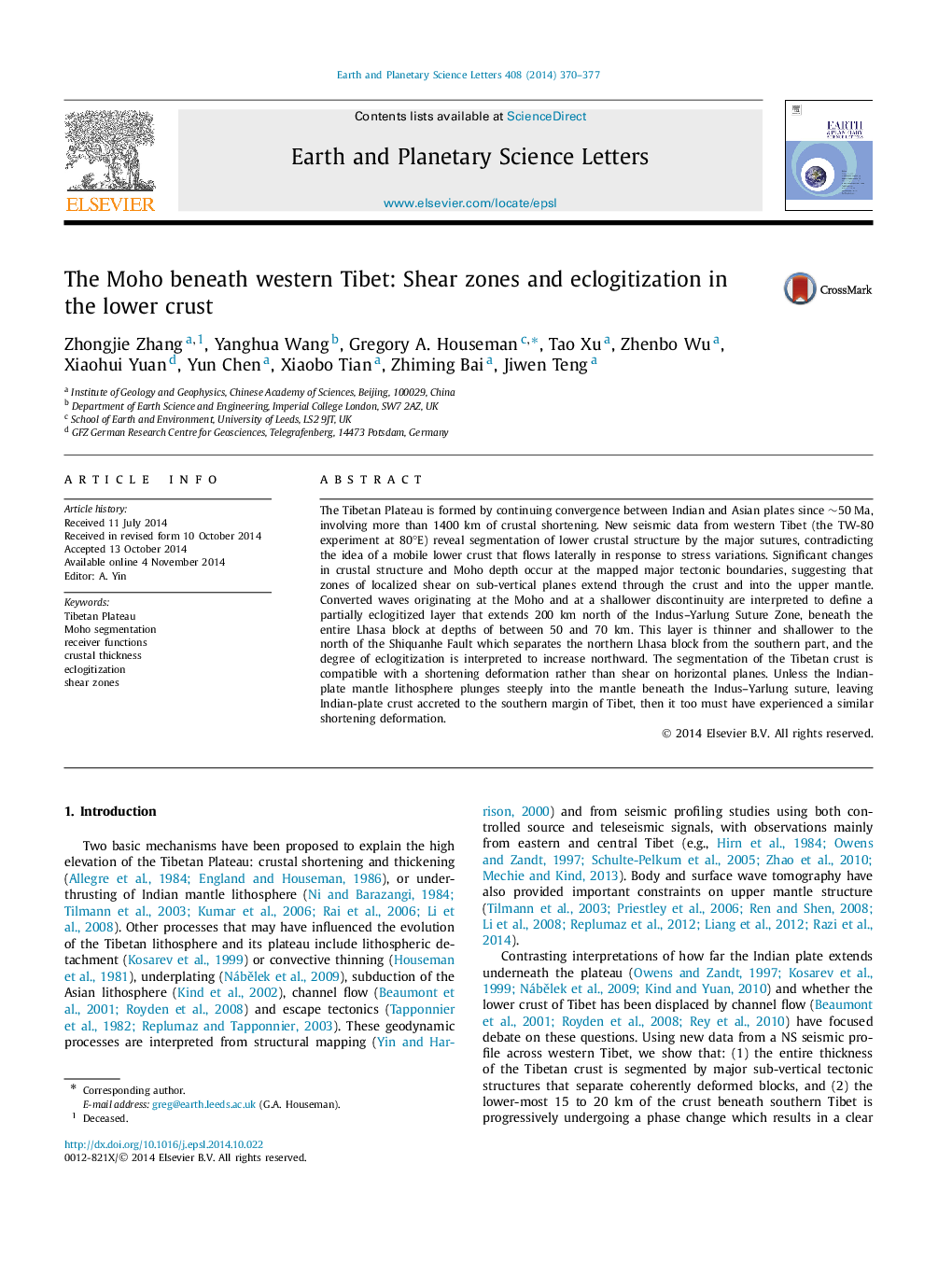| کد مقاله | کد نشریه | سال انتشار | مقاله انگلیسی | نسخه تمام متن |
|---|---|---|---|---|
| 6428733 | 1634748 | 2014 | 8 صفحه PDF | دانلود رایگان |

- A new seismic profile across western Tibet at 80°E based on receiver functions.
- Segmentation of lower crustal structure due to major lithospheric sutures.
- A distinct lower crustal layer (depths of 55-70 km) indicates eclogitization.
- Crust appears shortened by coherent deformation of blocks bounded by shear zones.
- Shear on horizontal planes within the crust inconsistent with Moho depth variation.
The Tibetan Plateau is formed by continuing convergence between Indian and Asian plates since â¼50 Ma, involving more than 1400 km of crustal shortening. New seismic data from western Tibet (the TW-80 experiment at 80°E) reveal segmentation of lower crustal structure by the major sutures, contradicting the idea of a mobile lower crust that flows laterally in response to stress variations. Significant changes in crustal structure and Moho depth occur at the mapped major tectonic boundaries, suggesting that zones of localized shear on sub-vertical planes extend through the crust and into the upper mantle. Converted waves originating at the Moho and at a shallower discontinuity are interpreted to define a partially eclogitized layer that extends 200 km north of the Indus-Yarlung Suture Zone, beneath the entire Lhasa block at depths of between 50 and 70 km. This layer is thinner and shallower to the north of the Shiquanhe Fault which separates the northern Lhasa block from the southern part, and the degree of eclogitization is interpreted to increase northward. The segmentation of the Tibetan crust is compatible with a shortening deformation rather than shear on horizontal planes. Unless the Indian-plate mantle lithosphere plunges steeply into the mantle beneath the Indus-Yarlung suture, leaving Indian-plate crust accreted to the southern margin of Tibet, then it too must have experienced a similar shortening deformation.
Journal: Earth and Planetary Science Letters - Volume 408, 15 December 2014, Pages 370-377